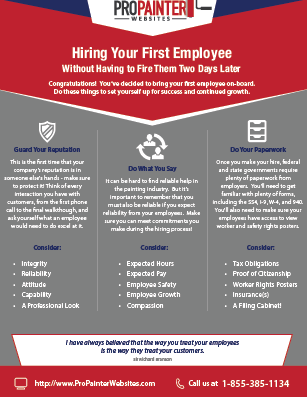Weather Considerations In Commercial Outside Painting: Important Information To Bear In Mind
Weather Considerations In Commercial Outside Painting: Important Information To Bear In Mind
Blog Article
Material By-Duke Duckworth
When you're preparing a commercial outside painting job, don't underestimate the influence of climate on your outcomes. You require to consider aspects like temperature level, humidity, and precipitation, as they can make or damage your paint work. For example, did you know that excellent conditions require specific temperature ranges and humidity degrees? Stopping working to keep track of these aspects can result in irregular surfaces or even damages to fresh paint. Recognizing these aspects is crucial to accomplishing a resilient, expert result. So, what certain weather should you watch out for?
Temperature level Considerations
When it comes to business exterior painting, temperature level plays an essential duty in the result of your job. If you're painting in severe heat, the paint can dry out too quickly, causing issues like inadequate bond and unequal coatings. You wish to aim for temperature levels in between 50 ° F and 85 ° F for the very best results. Below 50 ° F, paint may not cure appropriately, while over 85 ° F, you run the risk of blistering and breaking.
Timing your job with the appropriate temperatures is necessary. Start commercial painting in portland or in the morning or later in the mid-day when it's cooler, especially during hot months.
Also, take into consideration the surface temperature level; it can be significantly more than the air temperature, especially on bright days. Use a surface thermostat to check this before you begin.
If temperatures are uncertain, keep an eye on the weather report. Unexpected temperature drops or heat waves can thwart your strategies. You don't intend to start painting only to have the conditions transform mid-project.
Humidity Levels
Humidity degrees dramatically affect the success of your commercial exterior paint job. When the moisture is too expensive, it can prevent paint drying and healing, leading to a range of problems like bad adhesion and finish quality.
If you're preparing a task during moist conditions, you may discover that the paint takes longer to completely dry, which can extend your job timeline and increase prices.
Alternatively, low humidity can additionally pose difficulties. Paint might dry also promptly, avoiding correct application and resulting in an unequal coating.
You'll want to keep track of the humidity levels closely to ensure you're working within the suitable variety, generally in between 40% and 70%.
To get the very best results, consider making use of a hygrometer to measure moisture prior to starting your job.
If you locate the degrees are outside the optimum array, you may require to change your routine or select paints created for variable problems.
Always seek https://andersonyhqyh.losblogos.com/32428188/prepare-to-boost-your-home-by-using-the-influence-of-shade-check-out-how-popular-tones-can-reshape-your-environment-in-shocking-good-manners from the manufacturer's guidelines for details recommendations on humidity resistance.
Rainfall Impact
Rainfall or snow can dramatically disrupt your commercial external painting plans. When rainfall takes place, it can get rid of fresh used paint or develop an irregular coating. Preferably, you want to select days with completely dry climate to ensure the paint adheres properly and cures effectively. If you're captured in a shower, it's ideal to stop the project and wait for conditions to improve.
Moreover, snow can be even more destructive. Not just does it produce a damp surface, yet it can also decrease temperature levels, making it tough for paint to dry. This can lead to concerns like peeling or blistering down the line.
It's essential to check the weather prediction prior to beginning your job. If rain or snow is anticipated, take into consideration rescheduling.
Constantly remember to permit appropriate drying time in between layers, especially if the weather condition continues to be unpredictable.
Final thought
Finally, keeping an eye on the climate is essential for an effective commercial external painting task. By monitoring temperature level, humidity, and precipitation, you can guarantee the most effective conditions for application and curing. Remember to intend your job around favorable climate and constantly follow maker standards. With the right method, you'll accomplish a long-lasting, stunning surface that can withstand the components. Do not allow the climate catch you unsuspecting-- stay notified and paint clever!
